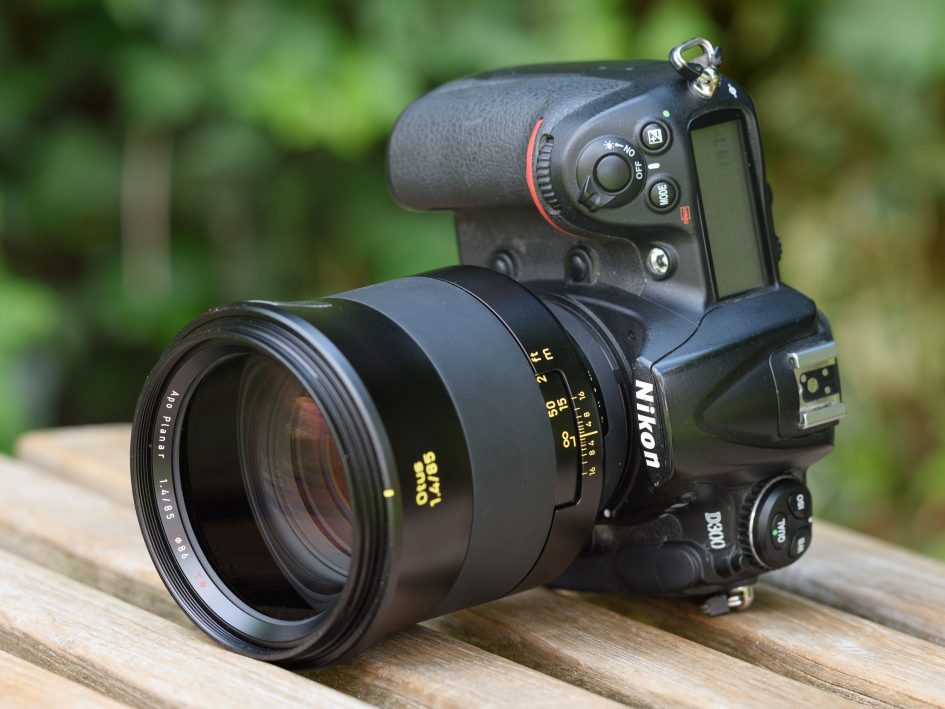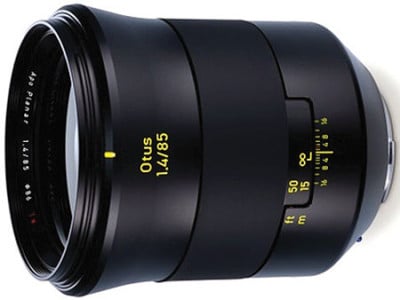Zeiss Otus 85mm f1.4 review
-
-
Written by Thomas
Verdict
The Zeiss 85mm f1.4 Otus is a worthy member of what has already become a legendary line-up. It delivers beautiful-looking images and superb quality across the board, even with the aperture opened to f1.4. This performance coupled with the tank-like build-quality and new design support Zeiss’ claim to have developed and manufactured the best short telephoto lens for DSLRs. Indeed it was impressive to see this lens easily surpass the performance of Nikon’s pro-grade 85/1.4G.
But an eye-watering price-tag of 4500 USD / 4000 EUR means it’s not simply a case of awarding it our “Highly Recommended” rating without additional consideration and justification. And apart from the high price there are two other negative aspects of this lens too:
Size/Weight: This is by far the largest and heaviest 85mm prime ever! Put it on a full-frame DSLR with the lens-hood mounted and you’re talking about schlepping over 2 kg around with a total length of around 23cm. But to put this in perspective: Mount the Nikon AF-S 24-70/2.8E VR on a D810 and you get a package of almost the same weight that is even 3cm longer. So yes, the Zeiss Otus is far from unobtrusive, but all being told it is well in the range of other professional lenses that you might carry around. That said, if you’re thinking of mounting it on a Sony A7 / A7r via an adapter, you should be prepared for an extremely front-heavy combination.
Manual focus: From the beginning of my tests I thought this was the biggest let-down of this lens – and I still think it is. If you’re as good or bad as me at manually focusing you have to cope with the risk of having around 50% of your shots with less than optimal focus/sharpness. This certainly is a killer for many photographers who need to nail their shot with only one try – and fast. They should absolutely avoid this lens and look for an alternative with autofocus, there’s no denying it. But if you work from a tripod using magnified live-view, have the chance to swap the focusing screen for one better-suited to manual focusing, or simply have the time to take a second or third shot if necessary, then you should definitely not shy away from considering this lens: its optical performance might well be worth the trouble. Plus if you mount it on a modern mirrorless camera, you can exploit technologies like focus peaking to further ease manual focusing.
Let’s see how the new lens compares to the competition.

Compared to Sigma 85mm f1.4 EX DG HSM
The Sigma AF 85/1.4 EX DG HSM is actually the cheapest 85mm f1.4 lens with AF (800 EUR). In my Sigma 85/1.4 DG review its performance earned it a recommendation. To fully deliver its potential though you have to be very careful to focus optimally – proof of my assertion that autofocus is not necessarily guarantied to nail every shot. But even if focus is perfect spherical aberrations / coma reduce contrast in the corners until stopped down to f2.8 for DX-bodies or f5.6 for FX-bodies. That is not a critical issue for some photos: high contrast in corners may not be crucial for portraiture or other types of photography that put one main subject in the center and benefit from fading-out the surroundings. Build-quality is not comparable to the Otus (or Sigma’s “Art” line). Overall it is a good lens but I think Sigma needs to come out with a new design to make their 85mm f1.4 lens a worthy member of its “Art” series.
Compared to Nikon AF-S 85 f1.4G ED
The AF-S 85/1.4G (see my Nikon 85mm f/1.4G review) with a street price of around 1400 EUR is the closest competitor from Nikon. As you can see from the comparisons in this review it generally cannot match the Otus in sharpness, clarity and resolution (with the exception being the FF/FX-corner resolution at infinity). The Nikon 85/1.4G has more coma and produces some color aberrations that the Otus simply lacks. As to Bokeh: The Nikon has the advantage of showing no Onion-rings at all while the Otus produces some albeit not as heavy as you might see from other lenses with aspheric elements. The Otus on the other hand does not show green outlining on Bokeh balls in the background. My remarks regarding autofocus with the Sigma also hold true for the Nikon: when shooting contrasty subjects wide-open there’s often a trade-off between optimum sharpness/resolution and some magenta coloration at high-contrast edges. With the Otus there is no such trade-off: If you can nail focus the resulting image is sharp and CA free. Build-quality is far from the Otus as the Nikon is mostly made from plastic. But the Nikon has the benefit of being much lighter at 595g and smaller (87x84mm).
Compared to Nikon AF-S 85mm f1.8G ED
The Nikon 85/1.8G is a very good lens and excellent value for money. It’s the cheapest 85mm large aperture lens with AF (450 EUR) that you can buy and it delivers an image quality that earned it a Highly Recommended in my Nikon 85/1.8G review. Contrast and sharpness is good to very good even wide open in the center and the FF/FX corner but with a drop in performance at around 10mm from the optical axis which you can clearly see in wide-open shots. Resistance to color aberrations is better than with the 85/1.4G from Nikon but it shows some focus-shift when stopped down. At 80x73mm and 350g it is dwarfed by the Otus but also has a 2/3 stop smaller focal ratio. It offers weather sealing on the lens-mount but otherwise cannot touch the build-quality of the Otus.
Zeiss 85mm f1.4 Otus final verdict
Sharpness, contrast, resistance against contra light, coma, loCA, purple fringing, Bokeh are all on a very good to exceptional level even at f1.4. So this is really the lens that you can use wide open with little to no compromise in optical performance and in that it is a unique short telephoto lens. It’s hard to select one of the strong points to single out as decisive. From all these optical aspects for me personally the performance regarding longitudinal CAs combined with the outstanding sharpness/clarity are the most important. LoCA can ruin a shot with nasty magenta and green colorations that simply stick out even at less than 100% magnification and reduce micro-contrast of lenses affected by it. You might be able to eliminate them in post-processing but this may require quite some work and have negative effects on some of the natural colors (esp. greens) in your shot. With the Zeiss 85/1.4 Otus micro-contrast is simply unblemished by color or spherical aberrations which produces clearer shots than with any other 85mm lens I’ve seen. Plus there is its exceptional build: This lens exudes quality in every aspect of its physical presence. So optical plus mechanical quality make for a very compelling package.
Summing it all up I’d say: This is not a lens for everybody – even if you forget (if you can) the steep price. You should clearly understand what this lens can and cannot do for you before considering getting one. With regard to the price: yes, the Otus is clearly an expensive lens, but take a look at Leica’s lenses and you understand that top-notch optical performance has its price. Compared to Leica Summilux-M f1.4 ASPH lenses the Zeiss Otus looks fairly priced.
So all-in-all I think the Zeiss 85mm f1.4 Otus has well earned a Highly Recommended. Below I have listed the good and bad points of the Zeiss 85mm f/1.4 Otus for you.
PS – don’t forget you can support my work next time you order anything at Amazon, B&H or Adorama by first clicking through to them using the links above and in the sidebar. It works for anything you order at any time – thanks for your support!
Summary
Good points:
- Excellent sharpness across the full-frame area.
- Little longitudinal CAs.
- Little coma.
- Excellent build quality.
Bad points:
- No autofocus.
- Large and heavy.
- No weather sealing at the lens mount.
- No image stabilization.




